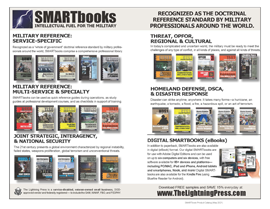Related Books
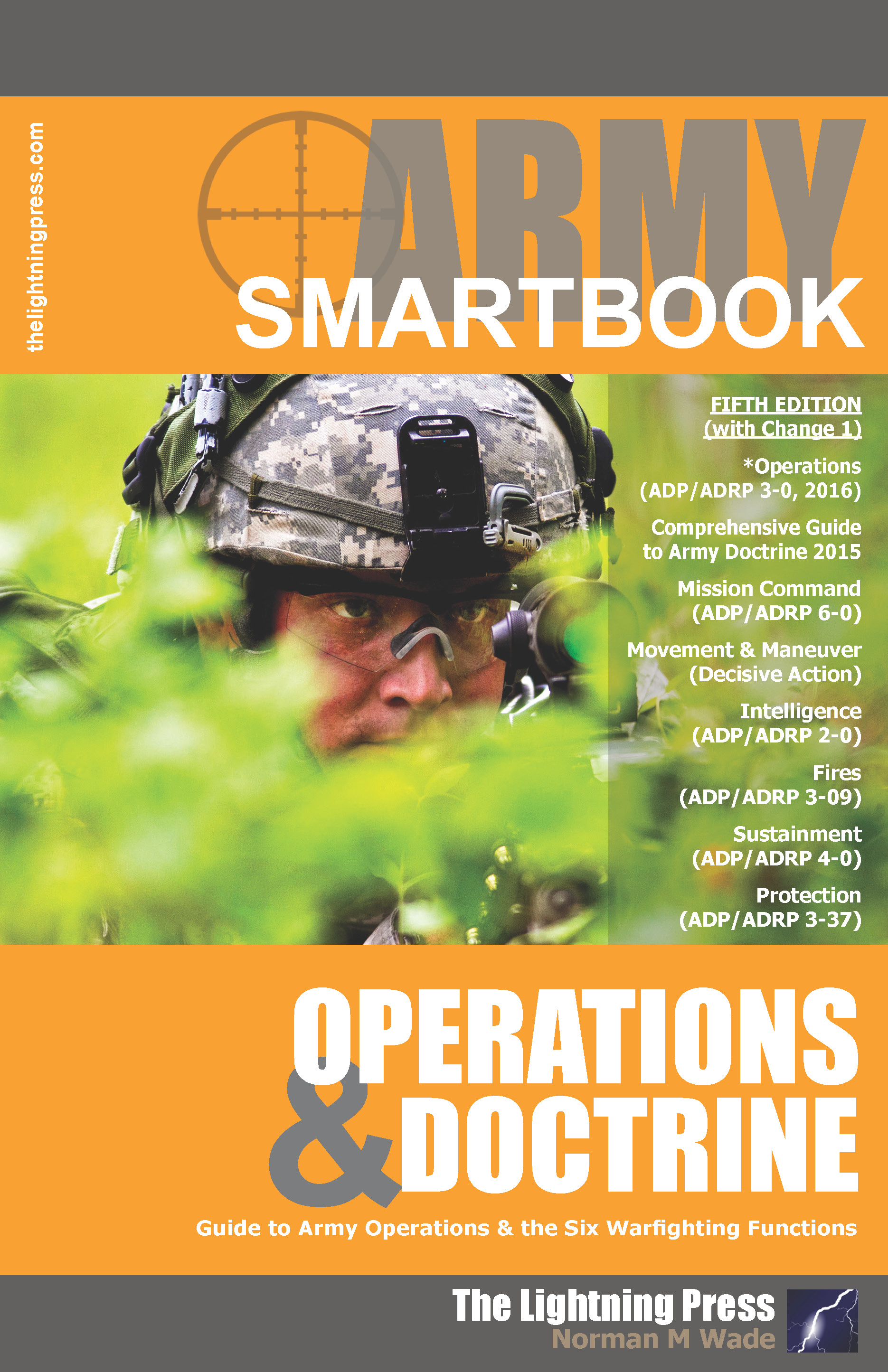
AODS5: The Army Operations & Doctrine SMARTbook, 5th Ed. w/Change 1 (PREVIOUS EDITION)

SUTS3: The Small Unit Tactics SMARTbook, 3rd Ed.

BSS7: The Battle Staff SMARTbook, 7th Ed.
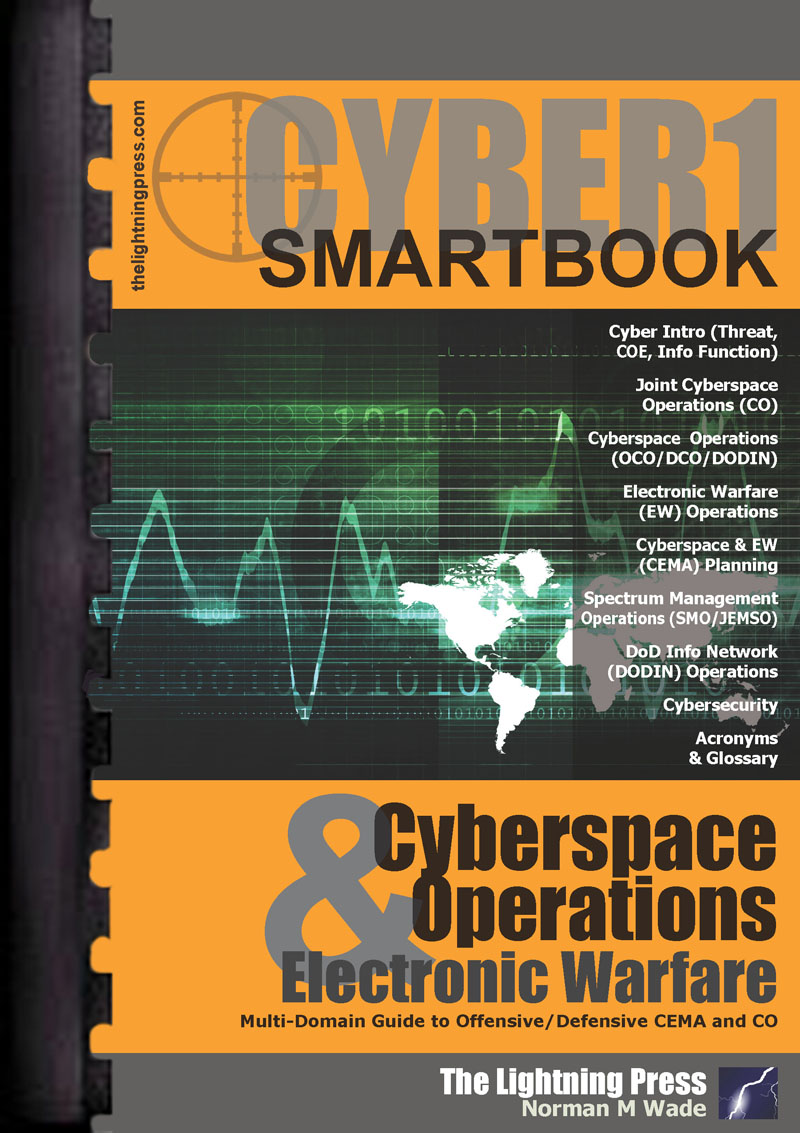
CYBER1-1: The Cyberspace Operations & Electronic Warfare SMARTbook (w/SMARTupdate 1)
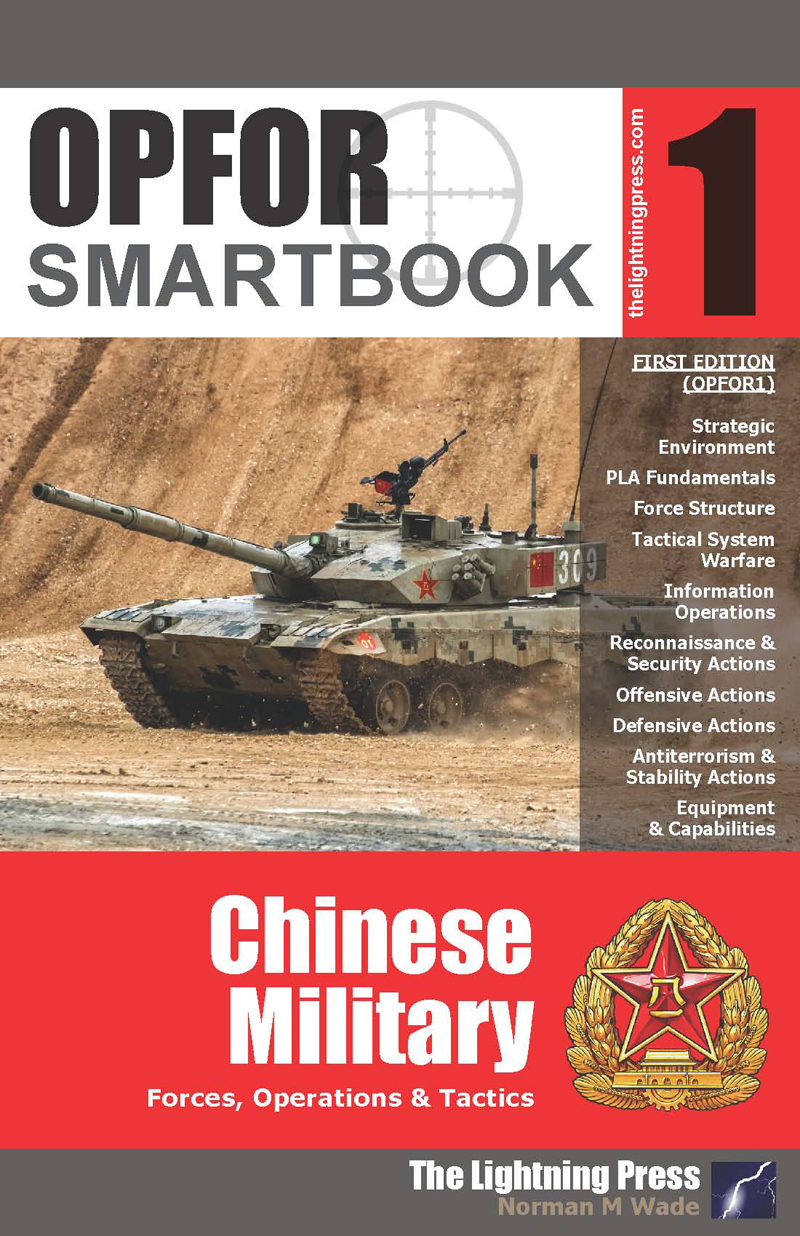
OPFOR SMARTbook 1 - Chinese Military
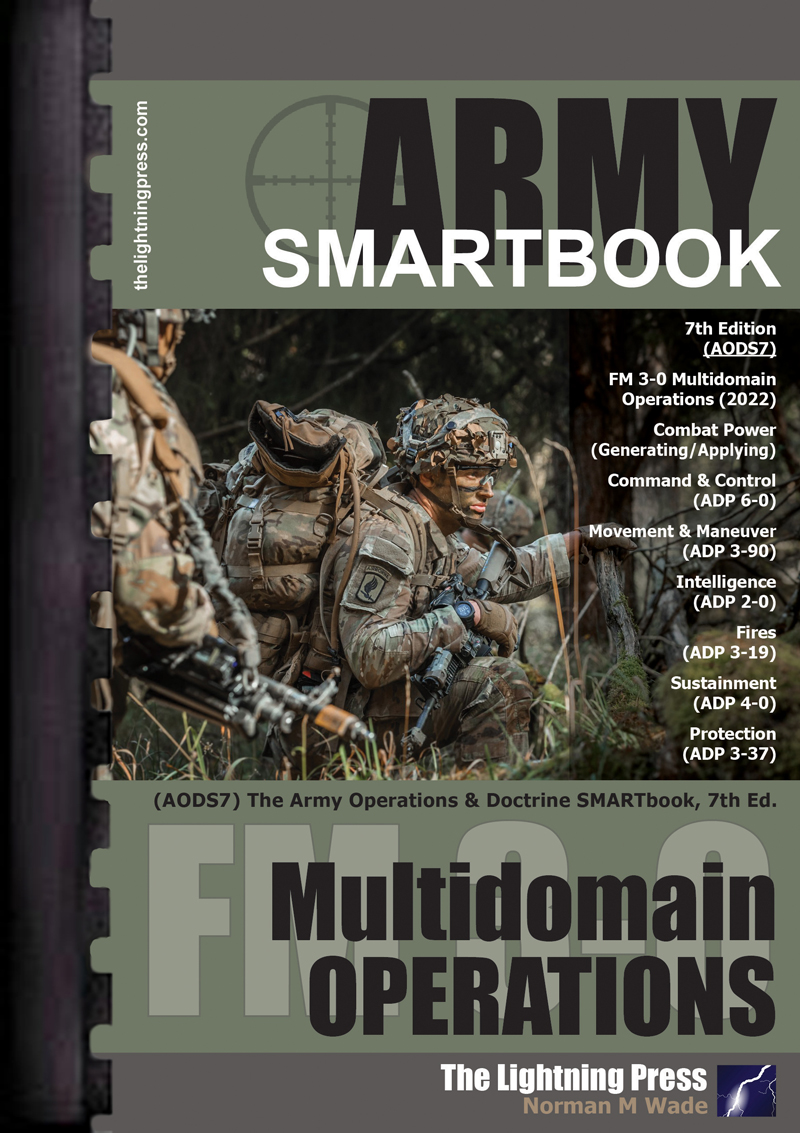
AODS7: The Army Operations & Doctrine SMARTbook, 7th Ed.
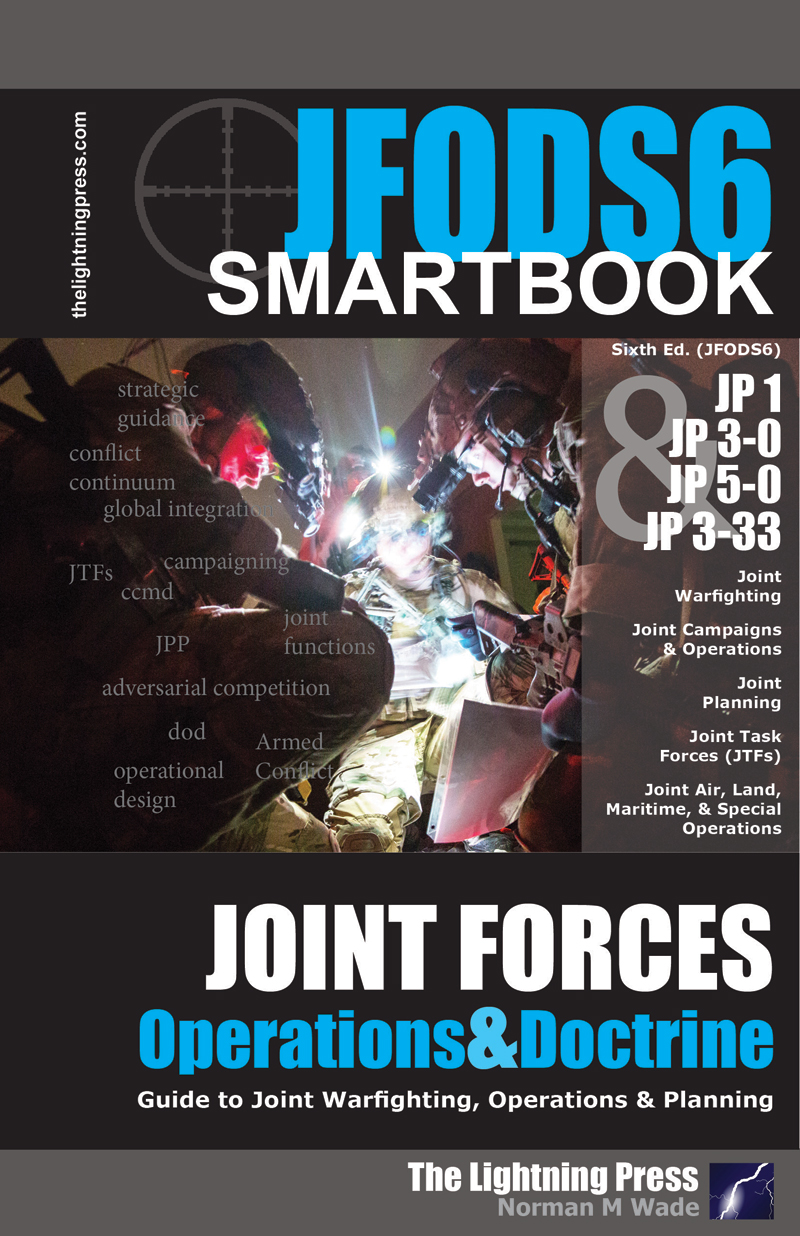
JFODS6: The Joint Forces Operations & Doctrine SMARTbook, 6th Ed.
AODS5: The Army Operations & Doctrine SMARTbook, 5th Ed. w/Change 1 (PREVIOUS EDITION)

ISBN-10 :1935886665
Release Date :May 1st, 2017
Norman M. Wade
Binding Type:Perfect Bind
Print Inside Pages:Black and White
Trim Size:5.5'' x 8.5''
Total Pages:320

A NEW edition of this book is available!
AODS7: The Army Operations & Doctrine SMARTbook, 7th Ed.
Upgrade/update to the NEW 7th Edition (AODS7)!
AODS5: The Army Operations & Doctrine SMARTbook, 5th Ed. w/Change 1 (May 2017) has been superseded by a newer seventh edition (AODS7).
Always check our website for the most current and up-to-date SMARTbook edition! The Lightning Press is committed to providing the best and most relevant doctrinal material to our readers and are vigilant in reviewing new publications, anticipating upcoming doctrinal releases, and incorporating the updated material into our SMARTbook series!
Related Books
SUTS3: The Small Unit Tactics SMARTbook, 3rd Ed.
ISBN-10 :1-935886-77-0
Release Date :Mar 1st, 2020
Cover Type:Gloss U.V. Coating
Binding Type:Plastic Comb
Print Inside Pages:Black and White
Trim Size:5.5'' x 8.5''
Total Pages:344

Paperback Edition
Price: $42.95 $36.95

Bundle & Save (Paperback + Digital)
Price: $85.90 $49.95
Planning & Conducting Tactical Operations
SUTS3: The Small Unit Tactics SMARTbook, 3rd Ed. is the third revised edition of The Small Unit Tactics SMARTbook, completely updated for 2019 to include ADP 3-90 Offense and Defense (Jul ‘19), FM 3-0 Operations w/Change 1 (Dec ‘17), FMs 3-90-1 & -2 (May ‘13), ATP 3-21.8 Infantry Platoon and Squad (Apr ‘16), ATP 3-21.10 Infantry Rifle Company (May ‘18), TC 3-21-76 The Ranger Handbook (Apr ‘17), and the latest versions of more than 20 additional references. SUTS3 also features a return of our premium GBC plastic-comb binding for a true open-flat reference experience!
At 344-pages, chapters and topics include tactical mission fundamentals, the offense, the defense, stability and counterinsurgency operations, tactical enabling tasks (security, reconnaissance, relief in place, passage of lines, encirclement, and troop movement), special purpose attacks (ambush and raid), urban and regional environments (urban, fortified areas, desert, cold region, mountain, and jungle operations), patrols and patrolling.
Tactics is the employment and ordered arrangement of forces in relation to each other. Through tactics, commanders use combat power to accomplish missions. The tactical-level commander uses combat power in battles, engagements, and small-unit actions.
The nature of close combat in land operations is unique. Combatants routinely come face-to-face with one another in large numbers in a wide variety of operational environments comprising all types of terrain. When other means fail to drive enemy forces from their positions, forces close with and destroy or capture them.
Offensive actions are combat operations conducted to defeat and destroy enemy forces and seize terrain, resources, and population centers. They impose the commander’s will on the enemy. A commander may also conduct offensive actions to deprive the enemy of resources, seize decisive terrain, deceive or divert the enemy, develop intelligence, or hold an enemy in position. The four primary offensive tasks are movement to contact, attack, exploitation, and pursuit.
A defensive task is a task conducted to defeat an enemy attack, gain time, economize forces, and develop conditions favorable for offensive or stability tasks. Although on the defense, the commander remains alert for opportunities to attack the enemy. A defending force does not wait passively to be attacked, aggressively seeking ways of attriting and weakening enemy forces before close combat begins. There are three basic defensive tasks—area defense, mobile defense, and retrograde.
The Small Unit Tactics SMARTbook translates and bridges operational-level doctrine into tactical application -- in the form of tactics, techniques and procedures -- and provides the “how to” at the small-unit level as a ready reference at the battalion, company, platoon, squad and fire team level.
Related Books
Discount sets with this book
BSS7: The Battle Staff SMARTbook, 7th Ed.
ISBN-10 :1-935886-94-0
Release Date :Oct 1st, 2023
Norman M. Wade
Binding Type:Plastic Comb
Print Inside Pages:Black and White
Trim Size:5.5'' x 8.5''
Total Pages:360

Paperback Edition
Price: $42.95 $36.95

Bundle & Save (Paperback + Digital)
Price: $85.90 $49.95
Planning & Conducting Multidomain Operations
BSS7: The Battle Staff SMARTbook, 7th Ed. is completely updated for 2023 to include FM 5-0 w/C1, Planning and Orders Production (2022); FM 6-0, Commander and Staff Organization and Operations (2022), FMs 1-02.1/.2, Military Terms & Symbols (2022); and more!
Focusing on planning and conducting multidomain operations (FM 3-0 Operations, 2022), BSS7 covers the operations process; commander and staff activities; the five Army planning methodologies - Army Design Methodology (ADM), Military Decison-making Process (MDMP), Troop Leading Procedures (TLP), Rapid Decision-Making and Synchronization Process (RDSP), & Army Problem Solving; integrating processes (IPB, information collection, targeting, risk management, and knowledge management); plans and orders; mission command, C2 warfighting function tasks, command posts, liaison; rehearsals & after action reviews; and operational terms and military symbols.
The Army’s framework for organizing and putting command and control into action is the operations process—the major command and control activities performed during operations: planning, preparing, executing, and continuously assessing the operation. Commanders use the operations process to drive the conceptual and detailed planning necessary to understand their operational environment (OE); visualize and describe the operation’s end state and operational approach; make and articulate decisions; and direct, lead, and assess operations.
Commanders, staffs, and subordinate headquarters employ the operations process to organize efforts, integrate the warfighting functions across multiple domains, and synchronize forces to accomplish missions. This includes integrating numerous processes and activities within the headquarters and with higher, subordinate, supporting, and supported units. Key integrating processes that occur throughout the operations process include intelligence preparation of the battlefield, information collection, targeting, risk management, and knowledge management.
Planning requires the integration of both conceptual thinking and detailed analysis. Army leaders employ several methodologies for planning, determining the appropriate mix based on the scope and understanding of the problem, time available, and availability of a staff. Army planning methodologies include the Army design methodology (ADM), military decision-making process (MDMP), Troop leading procedures (TLP), rapid decision-making and synchronization process (RDSP),and Army problem solving.
Commanders and staffs integrate the warfighting functions and synchronize the force to adapt to changing circumstances throughout the operations process. They use several integrating processes to do this. An integrating process consists of a series of steps that incorporate multiple disciplines to achieve a specific end. For example, during planning, the military decision-making process (MDMP) integrates the commander and staff in a series of steps to produce a plan or order. Key integrating processes that occur throughout the operations process include intelligence preparation of the battlefield, information collection, targeting, risk management, and knowledge management.
Note: BSS7: The Battle Staff SMARTbook, 7th Ed. is designed specifically to work hand-in-hand as a planner’s companion guide to AODS7: The Army Operations & Doctrine SMARTbook (Multidomain Operations), with specific page references that lead to expanded content pertinent to understanding multidomain operations from FM 3-0. Save $14.90 when you order both together (bundle the print and digital versions together and save $74.80)! Read more here: https://www.thelightningpress.com/bookstore/smartset/multidomain-ops-planning-set-2-books/
Related Books
Discount sets with this book
CYBER1-1: The Cyberspace Operations & Electronic Warfare SMARTbook (w/SMARTupdate 1)
ISBN-10 :1935886711
Release Note :Base CYBER1 released Oct '19 (New CYBER1-1 w/SMARTupdate 1 released 22 Sept 21.)
Norman M. Wade
Binding Type:Plastic Comb
Print Inside Pages:Black and White
Trim Size:5.5'' x 8.5''
Total Pages:344

Paperback Edition
Price: $42.95 $36.95

Bundle & Save (Paperback + Digital)
Price: $85.90 $49.95
Multi-Domain Guide to Offensive/Defensive CEMA and CO
CYBER1-1: The Cyberspace Operations & Electronic Warfare SMARTbook (w/SMARTupdate 1*) (Multi-Domain Guide to Offensive/Defensive CEMA and CO) topics and chapters include cyber intro (global threat, contemporary operating environment, information as a joint function), joint cyberspace operations (CO), cyberspace operations (OCO/DCO/DODIN), electromagnetic warfare (EW) operations, cyber & EW (CEMA) planning, spectrum management operations (SMO/JEMSO), DoD information network (DODIN) operations, acronyms/abbreviations, and a cross-referenced glossary of cyber terms.
*SMARTupdate 1 to CYBER1 (Aug ‘21) updates the first printing of CYBER1: The Cyberspace Operations & Electronic Warfare SMARTbook (Oct ‘19) by incorporating new material from FM 3-12, Cyberspace Operations and Electromagnetic Warfare (Aug ‘21), ATP 3-12.3, Electronic Warfare Techniques (Jul ‘19), ATP 6-02.70, Techniques for Spectrum Management Operations (Oct ‘19), JP 3-85, Joint Electromagnetic Spectrum Management Operations (May ‘20) and adding a new section on Cyberspace IPB (ATP 2-01.3, Jul ‘19). (Readers of the original/base CYBER1 can obtain SMARTupdate 1 at www.thelightningpress.com/smartupdates/)
United States armed forces operate in an increasingly network-based world. The proliferation of information technologies is changing the way humans interact with each other and their environment, including interactions during military operations. This broad and rapidly changing operational environment requires that today’s armed forces must operate in cyberspace and leverage an electromagnetic spectrum that is increasingly competitive, congested, and contested.
Cyberspace is a global domain within the information environment consisting of the interdependent network of information technology infrastructures and resident data, including the Internet, telecommunications networks, computer systems, and embedded processors and controllers. Operations in cyberspace contribute to gaining a significant operational advantage for achieving military objectives.
Cyber electromagnetic activities (CEMA) are activities leveraged to seize, retain, and exploit an advantage over adversaries and enemies in both cyberspace and the electromagnetic spectrum, while simultaneously denying and degrading adversary and enemy use of the same and protecting the mission command system (ADRP 3-0). CEMA consist of cyberspace operations, electronic warfare, and spectrum management operations.
Cyberspace operations (CO) are the employment of cyberspace capabilities where the primary purpose is to achieve objectives in or through cyberspace (JP 3-0). Cyberspace operations consist of three functions: offensive cyberspace operations, defensive cyberspace operations, and Department of Defense information network operations.
Electromagnetic Warfare (EW) (formerly "electronic" warfare) is military action involving the use of electromagnetic and directed energy to control the electromagnetic spectrum or to attack the enemy. EW consists of three functions: electromagnetic attack, electromagnetic protection, and electromagnetic support.
Spectrum management operations (SMO) are the interrelated functions of spectrum management, frequency assignment, host-nation coordination, and policy that enable the planning, management, and execution of operations within the electromagnetic operational environment during all phases of military operations. SMO are the management portions of electromagnetic spectrum operations (EMSO). EMSO also include electronic warfare.
Department of Defense information network (DODIN) operations are operations to secure, configure, operate, extend, maintain, and sustain DOD cyberspace.
Cybersecurity ensures the confidentiality, integrity, availability, authentication, and nonrepudiation of friendly information and information systems while denying adversaries access to the same information and information systems. Cybersecurity incorporates actions taken to protect, monitor, analyze, detect, and respond to unauthorized activity on DOD information systems and computer networks.
Related Books
Discount sets with this book
OPFOR SMARTbook 1 - Chinese Military
ISBN-10 :1-935886-55-X
Release Date :Aug 9th, 2022
Norman M. Wade
Binding Type:Perfect Bind
Print Inside Pages:Black and White
Trim Size:5.5'' x 8.5''
Total Pages:312
UPGRADE / CONVERT this book to premium GBC Plastic-Comb binding!
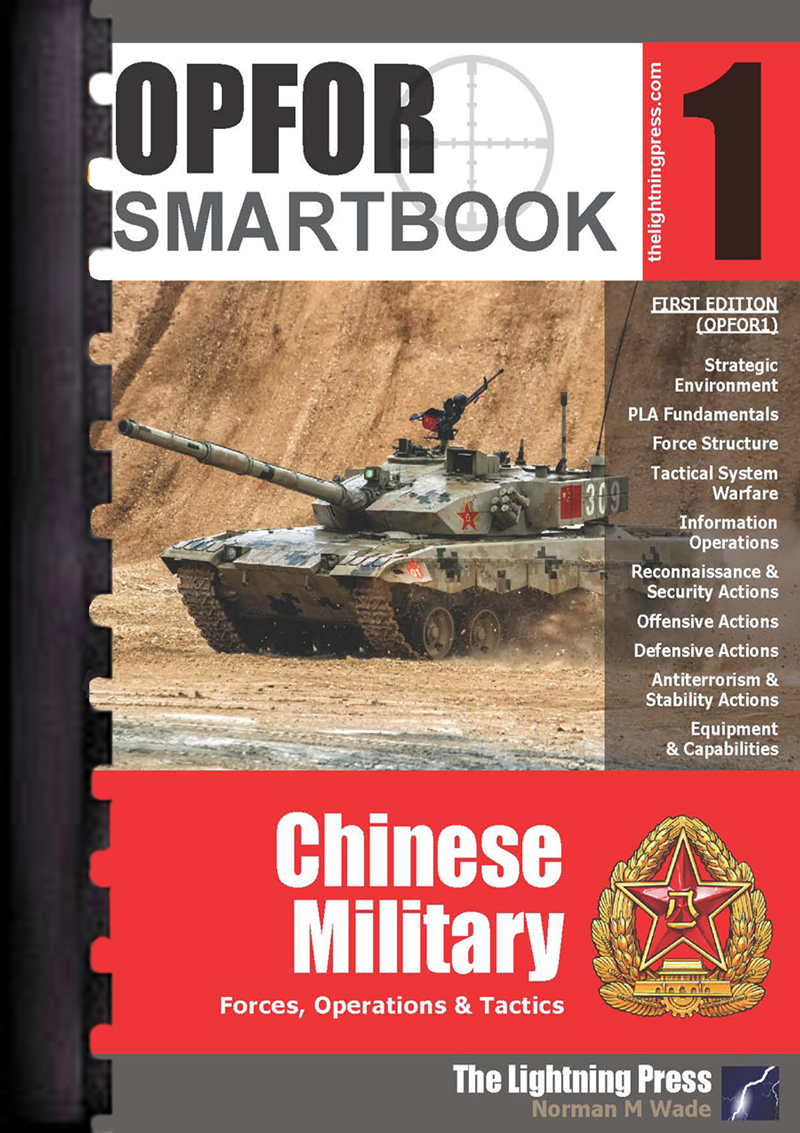

Paperback Edition
Price: $42.95 $36.95

Bundle & Save (Paperback + Digital)
Price: $85.90 $49.95
Chinese Forces, Operations & Tactics
OPFOR1 topics and chapters include the strategic environment (understanding China, defense & military strategy, strategic & operational environments, territorial disputes), force structure (PLA: Army, Navy, Marine, Air Force, Rocket Force, Strategic Support Force), system warfare, information operations, reconnaissance and security, offensive and defensive actions, antiterorrism and stability actions, equipment and capabilities (maneuver, fire support, air defense, aviation, engineer and chemical defense, network and communications, and special operations forces).
For over two thousand years, China has been surrounded by enemies, adversaries, and other competitors. Invasion, occupation, raids, and other incursions into Chinese territory were commonplace. The People’s Liberation Army (PLA) views protecting Chinese sovereignty and security as a sacred duty. China traditionally viewed military resistance as an affair for the entire population: mass resistance, guerrilla warfare, and winning a war of attrition.
The People’s Liberation Army Army (PLAA) has approximately 975,000 active-duty personnel in combat units. The PLAN is the largest navy in the world with a battle force of approximately 355 platforms, including major surface combatants, submarines, aircraft carriers, ocean-going amphibious ships, mine warfare ships, and fleet auxiliaries. The Air Force (PLAAF) and PLAN Aviation together constitute the largest aviation forces in the region and the third largest in the world, with over 2,800 total aircraft (not including trainer variants or UAVs) of which approximately 2,250 are combat aircraft (including fighters, strategic bombers, tactical bombers, multi-mission tactical, and attack aircraft). The PLA Rocket Force (PLARF) is the largest missile force in the world, operating well over 1,000 short-range, medium-range, and intercontinental ballistic missiles (ICBMs) and over 300 long-range cruise missiles.
With a force that totals approximately two million personnel in the regular forces, the PLA has sought to modernize its capabilities and improve its proficiencies across all warfare domains so that as a joint force it can conduct the range of land, air, and maritime operations as well as space, counterspace, electronic warfare (EW), and cyber operations. Recognizing that joint operations, information flows, and rapid decision-making are vital in modern warfare, the PRC continues to place a high priority on modernizing the PLA’s capability to command complex joint operations in near and distant battlefields.
The PRC has stated its defense policy aims to safeguard its national sovereignty, security, and development interests. China’s leaders view these interests as foundational to their national strategy. In 2020, the PRC’s defense policy and military strategy primarily oriented the PLA towards “safeguarding” its perceived “sovereignty and security” interests in the region counter the United States. At the same time, China’s leaders increasingly cast the armed forces as a practical instrument to defend Beijing’s expanding global interests and to advance its foreign policy goals within the framework of “Major Power Diplomacy with Chinese Characteristics.”
Related Books
Discount sets with this book
AODS7: The Army Operations & Doctrine SMARTbook, 7th Ed.
ISBN-10 :1935886916
Release Date :Mar 1st, 2023
Norman M. Wade
Binding Type:Plastic Comb
Print Inside Pages:Black and White
Trim Size:5.5'' x 8.5''
Total Pages:352

Paperback Edition
Price: $42.95 $36.95

Bundle & Save (Paperback + Digital)
Price: $85.90 $49.95
Multidomain Operations
AODS7: The Army Operations & Doctrine SMARTbook, 7th Ed. (Multidomain Operations) is completely updated with the 2022 edition of FM 3-0. AODS7 focuses on Multidomain Operations and features rescoped chapters on generating and applying combat power: command & control (ADP 6-0), movement and maneuver (ADPs 3-90, 3-07, 3-28, 3-05), intelligence (ADP 2-0), fires (ADP 3-19), sustainment (ADP 4-0), & protection (ADP 3-37).
The Army’s primary mission is to organize, train, and equip its forces to conduct prompt and sustained land combat to defeat enemy ground forces and seize, occupy, and defend land areas. Army forces shape operational environments, counter aggression on land during crisis, prevail during large-scale ground combat, and consolidate gains.
Army forces achieve objectives through the conduct of operations. Operations vary in many ways. They occur in all kinds of physical environments and vary in scale of forces involved and duration.
Multidomain operations are the combined arms employment of joint and Army capabilities to create and exploit relative advantages that achieve objectives, defeat enemy forces, and consolidate gains on behalf of joint force commanders. Multidomain operations are the Army’s contribution to joint campaigns, spanning the competition continuum.The Army provides forces capable of transitioning to combat operations, fighting for information, producing intelligence, adapting to unforeseen circumstances, and defeating enemy forces. Army forces employ capabilities from multiple domains in a combined arms approach that creates complementary and reinforcing effects through multiple domains while preserving combat power to maintain options for the joint force commander.
Combat power is the total means of destructive and disruptive force that a military unit/formation can apply against an enemy at a given time. It is the ability to fight. The complementary and reinforcing effects that result from synchronized operations yield a powerful blow that overwhelms enemy forces and creates friendly momentum. Army forces deliver that blow through a combination of five dynamics: leadership, firepower, information, mobility, and survivability.
The warfighting functions contribute to generating and applying combat power. Well sustained units able to move and maneuver bring combat power to bear against the opponent. Joint and Army indirect fires complement and reinforce organic firepower in maneuver units. Survivability is a function of protection tasks that focus friendly strengths against enemy weaknesses. Information contributes to the disruption and destruction of enemy forces. Intelligence determines how and where to best apply combat power against enemy weaknesses. C2 enables leadership, the most important qualitative aspect of combat power.
Note: AODS7: The Army Operations & Doctrine SMARTbook (Multidomain Operations) is designed specifically to work hand-in-hand as a planner’s companion guide to BSS7: The Battle Staff SMARTbook, 7th Ed., with specific page references that lead to expanded content pertinent to understanding multidomain operations from FM 3-0. Save $14.90 when you order both together (bundle the print and digital versions together and save $74.80)! Read more here: https://www.thelightningpress.com/bookstore/smartset/multidomain-ops-planning-set-2-books/
Related Books
Discount sets with this book
JFODS6: The Joint Forces Operations & Doctrine SMARTbook, 6th Ed.
ISBN-10 :1-935886-96-7
Release Date :Dec 11th, 2023
Binding Type:Perfect Bind
Print Inside Pages:Black and White
Trim Size:5.5'' x 8.5''
Total Pages:368
UPGRADE / CONVERT this book to premium GBC Plastic-Comb binding!
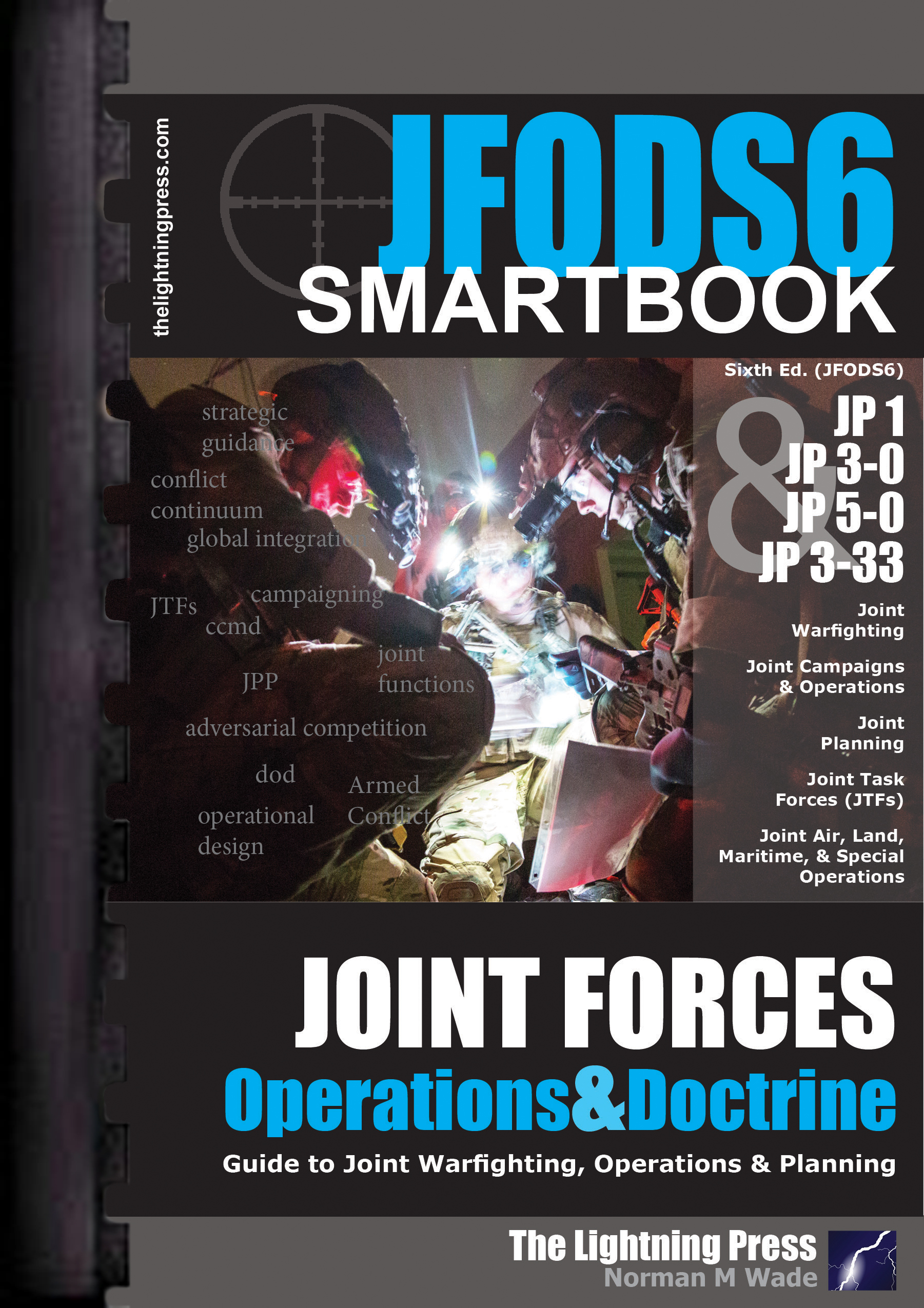

Paperback Edition
Price: $42.95 $36.95

Bundle & Save (Paperback + Digital)
Price: $85.90 $49.95
Guide to Joint Warfighting, Operations & Planning
JFODS6 is the sixth revised edition of The Joint Forces Operations & Doctrine SMARTbook. JFODS6 is completely updated for 2023 with new/updated material from the latest editions of JP 3-0 Joint Campaigns and Operations (Jun ‘22), JP 5-0 Joint Planning (Dec ‘20), JP 3-33 Joint Force Headquarters (Jun ‘22), and JP 1 Volumes I and II Joint Warfighting and the Joint Force (Jun ‘20), Additional topics and references include Joint Air, Land, Maritime and Special Operations (JPs 3-30, 3-31, 3-32 & 3-05).
The ultimate purpose of the Armed Forces of the United States is to defend the homeland and win the nation’s wars. The four strategic uses of the military instrument of national power - assurance; both forms of coercion, deterrence and compellence; and forcible action - are implemented through campaigns, operations, and activities that vary in purpose, scale, risk, and intensity, and occur across a competition continuum.
The competition continuum describes a world of enduring competition conducted through a mixture of cooperation, competition, and armed conflict. Competition is a fundamental aspect of international relations; as state and non-state actors seek to protect and advance their interests in pursuit of influence, advantage, and leverage, they continually compete over incompatible aims. Armed conflict occurs when a state or non-state actor uses lethal force as the primary means to satisfy its interests. Armed conflict varies in intensity and ranges from crisis response and limited contingency operations to large-scale combat operations.
The capability of the Armed Forces of the United States to operate as a cohesive joint force is a key advantage in any operational environment. Integrating Service components’ forces under a single joint force commander (JFC) maximizes the effectiveness and efficiency of the joint force. The joint force conducts campaigns and operations in a complex, volatile, security environment characterized by contested norms and persistent disorder. National security threats are transregional, all-domain, and multifunctional.
Joint planning is the deliberate process of determining how (the ways) to use military capabilities (the means) in time and space to achieve objectives (the ends) while considering the associated risks. Joint planning ties the military instrument of national power to the achievement of national security objectives and transforms national strategic objectives into operational design/approaches, lines of operation, and operational objectives, which in turn are carried out through tactical actions.
A joint task force (JTF) is the most common command and control option for conducting joint operations. A JTF may be established when the scope, complexity, or other factors of the operation require capabilities of Services from at least two MILDEPs operating under a single JFC. Commanders must integrate the capabilities and synchronize the operations of air, land, maritime, space, special operations, and cyberspace forces to defeat peer enemies.
Related Books
Discount sets with this book












